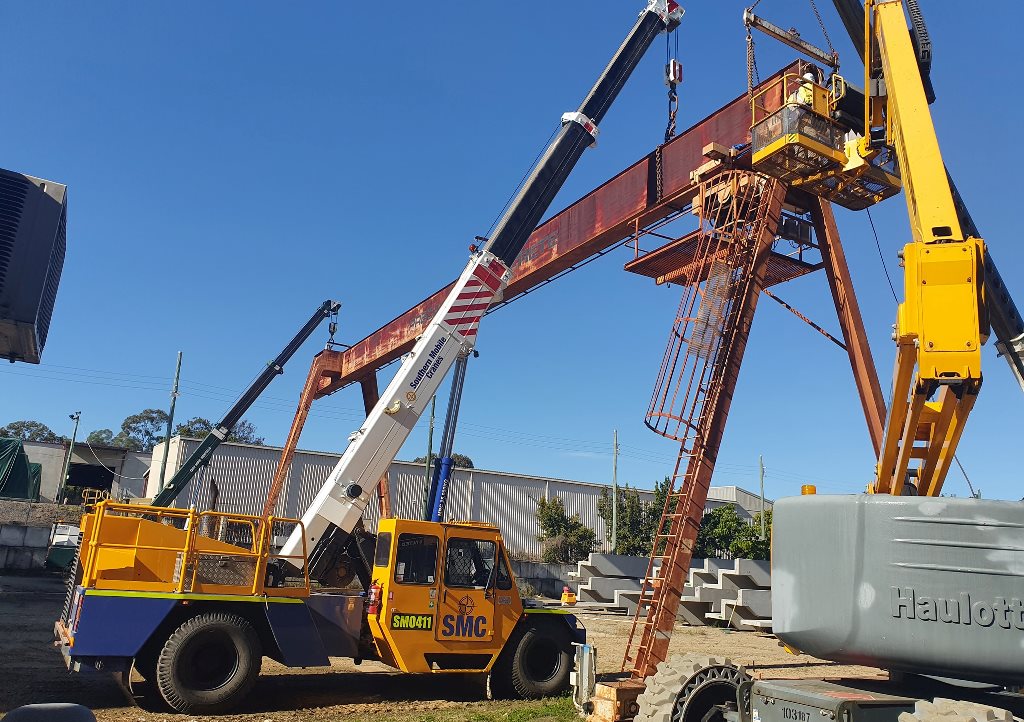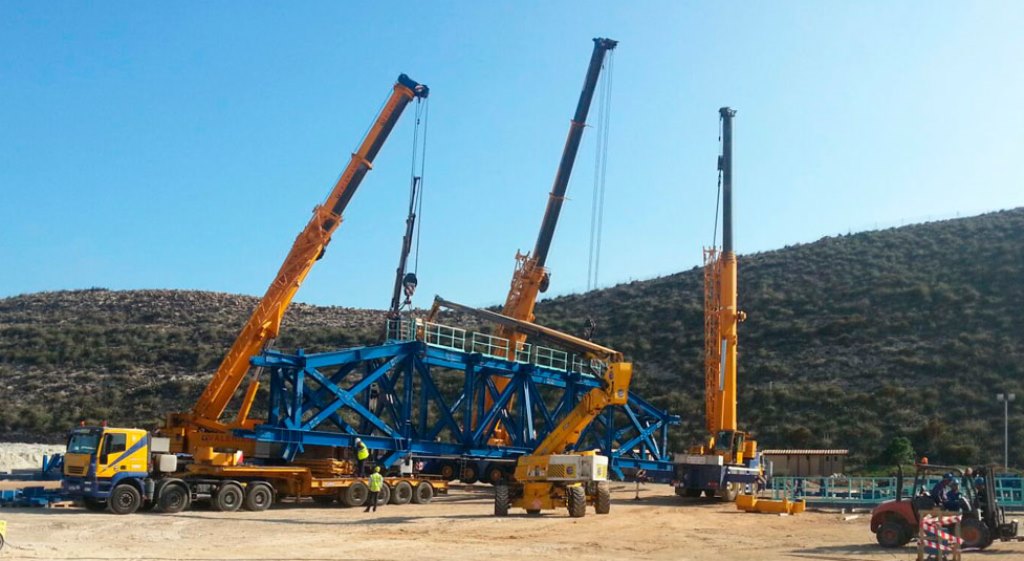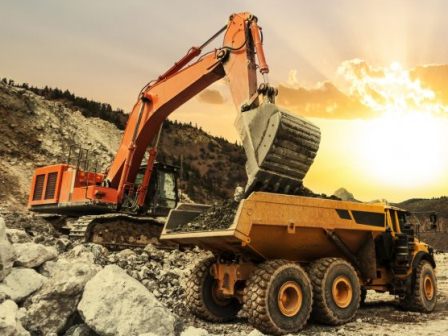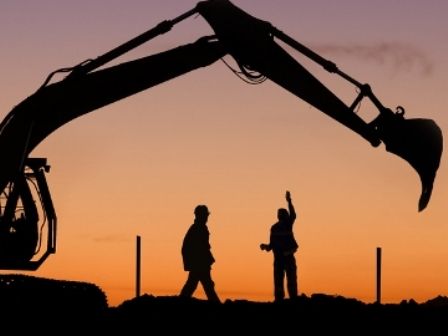This General Guide provides information on how to manage the risks of cranes at a workplace.
It is supported by specific guides on tower cranes, mobile cranes, inspecting and maintaining cranes, and information sheets on:
- Bridge and gantry cranes
- Vehicle loading cranes
- Vessel-mounted cranes
- Crane-lifted workboxes
- Using other powered mobile plants as a crane, and
- Quick-hitches for earthmoving machinery
Who should use this Guide?
You should use this guide if you own, hire, lease, handle, store, transport, maintain or manage the use of a crane in the workplace.
Who has duties under the law?
Everyone in the workplace has a work health and safety duty. A range of people have specific responsibilities for cranes including the:
- crane designer, manufacturer, importer, and/or supplier
- crane owner and other persons with management or control of the crane or the workplace where a crane will operate
- competent person who inspects cranes, and
- crane operator

Crane operators’ risk assessment
Duty holders and their obligations
Functions of construction management
A person conducting a business or undertaking has the primary duty to ensure, so far as is reasonably practicable, that workers and other people are not exposed to health and safety risks arising from the business or undertaking.
This duty requires the person to manage risks by eliminating health and safety risks so far as is reasonably practicable, and if it is not reasonably practicable to eliminate the risks, by minimizing those risks so far as is reasonably practicable. It also includes ensuring so far as is reasonably practicable the:
- provision and maintenance of safe plant including cranes, and
- safe use, handling, storage, and transport of plant.
The Work Health and Safety (WHS) Regulations include specific duties for a person conducting a business or undertaking with management or control of a plant, powered mobile plant, and plant that lifts or suspends loads.
If you own a crane you are the person with management or control of that plant.
If you hire or lease a crane, you have management or control of that plant for the period you have hired it. Both you and the person you have hired or leased it from will have duties to eliminate or minimize the risks associated with the plant, so far as is reasonably practicable.
crane manufacturers
Designers, manufacturers, suppliers, and importers
Designers, manufacturers, suppliers, and importers of plants must ensure, so far as is reasonably practicable, that the plant they design, manufacture, import, or supply is without risks to health and safety.
This duty includes carrying out analysis, testing, or an examination and providing specific information about the plant. The information must, so far as is reasonably practicable, be passed on from the designer through to the manufacturer and supplier to the end-user.
Suppliers must provide a purchaser of a crane that requires plant design registration with the design registration number.
company directors
Officers, such as company directors, have a duty to exercise due diligence to ensure the business or undertaking complies with the WHS Act and Regulations.
This includes taking reasonable steps to ensure the business or undertaking has and uses appropriate resources and processes to eliminate or minimize risks from plant.
Workers and others
Workers and other people at the workplace must take reasonable care for their own health and safety, co-operate with reasonable policies, procedures and instructions and not adversely affect other people’s health and safety

How can risks be managed in a project?
Use the following steps to ensure, so far as is reasonably practicable, that workers and other people are not exposed to health and safety risks:
Hazard identification methods
Find out what could cause harm. The following can help you identify potential hazards:
Observe the workplace to identify areas where cranes operate and how they interact with other vehicles, pedestrians, and fixed structures like overhead electric lines.
Ask the crane operator, crane crew, and others about problems they encounter at the workplace including operation, inspection, maintenance, repair, transport, and storage requirements.
Review your inspection, test, and maintenance records e.g. logbooks, and incident and injury records including near misses.
Assess the risk
In many cases, the risks and related control measures will be well known.
In other cases, you may need to carry out a risk assessment to identify the likelihood of somebody being harmed by the hazard and how serious the harm could be.
People who work with or near cranes are most at risk. Some of the risks when using a crane include:
- structural failure, overturning, or collapse of the crane
- contact or collision of the crane or its load with people or other plants and structures, and
- falling objects.
A risk assessment can help you determine what action you should take to control the risk and how urgently the action needs to be taken.
Risk controls Examples
Take action to control the risk. The WHS laws require a business or undertaking do everything reasonably practicable to eliminate or minimize risks.
The ways of controlling risks are ranked from the highest level of protection and reliability to the lowest. This ranking is known as the hierarchy of risk control. You must work through this hierarchy to manage risks.
You need to consider possible control measures and make a decision about which are reasonably practicable for your workplace.
Deciding what is reasonably practicable includes the availability and suitability of control measures, with a preference for using substitution, isolation, or engineering controls to minimize risks before using administrative controls or personal protective equipment (PPE).
Cost may also be relevant, but you can only consider this after an effective review of all reasonably practicable control measures.
The first thing to consider is whether crane-related hazards can be completely removed from the workplace.
For example, designing items of size, shape, and weight so they can be delivered, handled, or assembled at the location where they will be used without the need for a crane.
If it is not reasonably practicable to completely eliminate the risk then consider the following options in the order they appear below to minimize risks, so far as is reasonably practicable:
- substitute the hazard for something safer e.g. replace a crane operating cabin with a restricted field of vision with one that has a clear field of vision or use remote control, for example, a pendant control
- isolate the hazard from people e.g. use concrete barriers to create an exclusion zone to separate crane operations from workers and powered mobile plant, and
- use engineering controls e.g. enclosing the operator with a falling object protective structure (FOPS) to minimize the risk of the operator being hit by a falling object.
Control measures
If after implementing the above control measures a risk still remains, consider the following controls in the order below to minimize the remaining risk, so far as is reasonably practicable:
- use administrative controls e.g. schedule crane operations to avoid or reduce the need for pedestrians and vehicles to interact with the crane in the area of operation, and
- use PPE e.g. gloves, hard hats, high visibility vests, earplugs/muffs, and eye protection.
Check your control measures
Control measures need to be regularly reviewed to make sure they remain effective, taking into consideration changes, the nature and duration of work, and that the system is working as planned.
Control measures in the workplace
Who is involved?
You must consult your workers and their health and safety representatives if any when deciding how to manage the risks of using a crane in the workplace.
If there is more than one business or undertaking involved at your workplace you must consult them to find out who is doing what and work together so risks are eliminated or minimized so far as is reasonably practicable.
This may involve discussing site-specific requirements including the type of crane to use, operator training, and traffic management.
Further information on consultation requirements is in the Code of Practice: Work health and safety consultation, co-operation, and coordination
What should be done before using a crane?
The person with management or control of the plant at a workplace must ensure, so far as is reasonably practicable, that the plant used is specifically designed to lift or suspend the load.
A crane is one type of plant generally designed to especially lift and suspend loads.
The type of work you will be doing, how it will be done, and who will be involved should be planned and discussed between the people involved in the work before deciding what type of crane will be used.
This includes people directly, for example, crane operators and other workers, and indirectly, for example, suppliers, designers, and crane hirers involved with the work.
Crane selection chart
Before you choose a crane you should discuss your workplace needs with suppliers and identify the cranes most suited to the workplace and the work for which they will be used.
Take into consideration the complete life cycle of the crane, how long you are likely to keep the crane, how often the crane is likely to be used, the conditions under which it will be used and the maximum loads the crane is likely to bear.
A second-hand crane is more likely to have outdated or missing safety features.
Suppliers of second-hand cranes must do what is reasonably practicable to supply equipment that is safe to use at work and where practicable, fits safety features.
Some of the things to look for when choosing a crane are:
- safe access points e.g. ladders, footholds, steps, and grabs rails
- seat design e.g. comfort and back support
- visibility e.g. mirror, window, and windscreen design, and
- environmental controls e.g. temperature control units to avoid worker heat stress
Crane rental
Anyone hiring or leasing a crane to others has duties as both a supplier of the crane and as a person with management or control of the crane at the workplace.
They must check the crane is safe to use and properly maintained and provide specific information about the crane including instructions on how to operate it safely.
Before you hire a crane you should check it is suitable for its intended use. You should also consider whether you need to hire a crane only or a crane with a trained and licensed crane crew.
If you do not have the knowledge or expertise about crane specifications, limitations, and operational requirements, you should talk to the crane supplier and provide relevant information about the work to be done, the workplace and the type of lifts to be completed so the supplier can provide a suitable crane.

Lifting Operations Risk Assessment
The manual provides practical guidance for the safe operation of the crane, provided that the crane is used in accordance with the manufacturer’s recommendation.

Heavy Equipment Rental
Rental is a prominent and growing model in the construction business. The development of the rental industry in new markets requires a certain level of trust in a country and in society.

Job safety analysis for loading and unloading
We can not get rid of danger completely however we can reduce the risk and control it by utilizing normal procedures and good work practices.

Heavy Equipment Safety Topics
Any person who operates, leases, rented, or borrowed heavy equipment must take many hours of safety training for each type of equipment.
